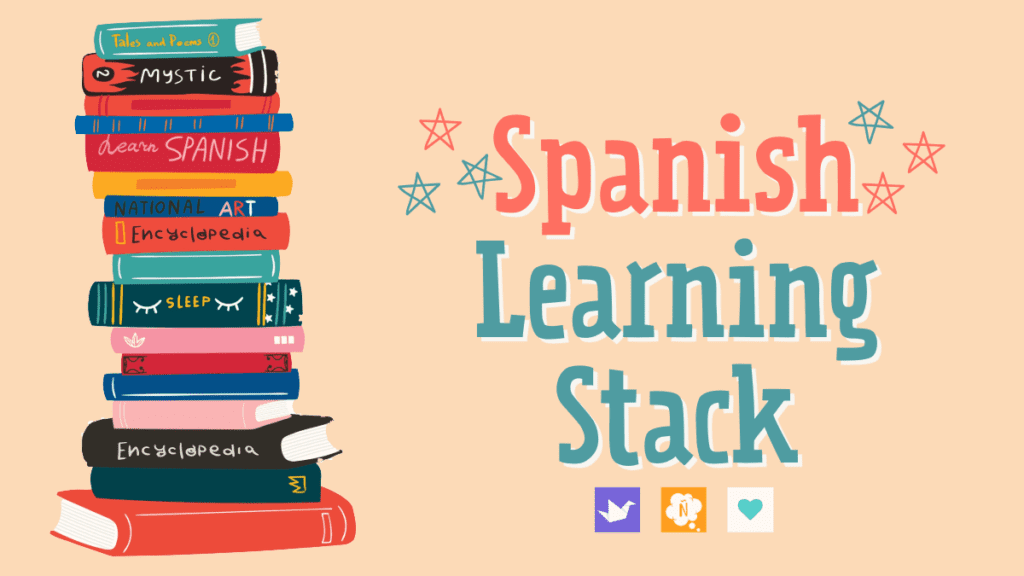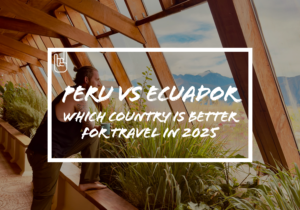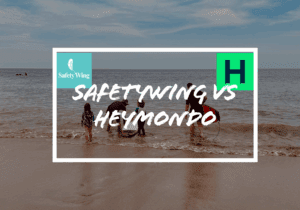Learning Spanish for Travel: The Family Guide to Feeling Less Lost and More Connected
Learning Spanish for travel can make the difference between feeling like a tourist and actually connecting with the people around you. For families, it’s even more powerful: kids pick up phrases quickly, parents feel less stressed, and everyday things like ordering food or catching a bus suddenly feel doable. This guide breaks down the best ways for families to learn Spanish before (and during) a trip, with practical tips and resources we’ve actually used on the road.
Best Way to Learn Spanish Before Traveling
So you’ve booked your flights (or maybe just daydreamed about it 347 times). You’re heading to Latin America, or maybe Spain, or just hoping to not look like a total deer in headlights when someone asks you a simple question like, ¿Quieres una bolsa?
But here’s the thing:
Spanish isn’t just a “nice-to-have” skill for travel—it’s a connection tool. A confidence-builder. A way to unlock moments most tourists totally miss.
And if you’re traveling with kids? It becomes even more powerful. Because now it’s not just you learning a new language, it’s your whole family stepping into a new culture together.
**EDIT
I have also started to use Baselang for my Spanish practice and currently doing 2 hours of speakign practice each day, read my full article here
This blog is fuelled by caffeine and chaos, if it helps, support our journey.
Table of Contents
Is It Important to Learn Spanish for Travel?
No. You won’t be thrown out of the country for not knowing the difference between ser and estar.
But let’s be honest:
Trying to order dinner with wild hand gestures and Google Translate is only fun once.
In many parts of Latin America, especially outside major cities, English isn’t widely spoken. Even basic Spanish can help you:
- Navigate buses, taxis, and markets
- Avoid tourist traps
- Actually connect with locals (instead of just observing them)
- Show respect for the place you’re visiting
- Teach your kids that the world is bigger than their default language
Why We’re Learning Spanish as a Family
Honestly, because it’s more fun (and way less lonely).
Kids are naturally curious, sponge-like language learners. When you turn Spanish into a family thing, it becomes something you all live rather than just study.
Plus, it sends a strong message:
“We’re not just here to take photos. We’re here to learn.”
And let’s be real: having your 5 -year-old remind you how to conjugate tener is both humbling and hilarious.
How Much Spanish Do You Really Need to Know?
This is one of the most searched questions, and the answer might surprise you.
You don’t need to be fluent.
You don’t even need to be good.
What you do need:
- Confidence to try
- A few key travel phrases
- Listening skills to spot what’s being said
- Patience (especially with yourself)
If you can ask directions, order food, and handle simple questions, you’re going to feel a LOT more in control. Anything beyond that is a bonus.
What’s the Best Way to Learn Spanish for a Trip?
Here’s what’s worked for us (and what hasn’t):
1. Start Early… But Not Perfect
Don’t wait until you “have more time.” Just start. 10 minutes a day is better than nothing. And no, you don’t need to master grammar first.
Apps we’ve used:
Dreaming Spanish (for input-based learning)
Duolingo (fun for kids but not great for real-world speaking)
TalkBox.Mom (for phrases you actually say daily with your kids)
2. Use Comprehensible Input
If you’ve heard of the “input hypothesis,” you know the idea is this: language is acquired by understanding messages. Not by memorising vocabulary lists.
Watch shows, listen to podcasts, and read books just slightly above your level.
🎧 Our fave family Spanish resources:
Peppa Pig en Español (yes, really) My kids love it!
LocoLingo (for silly, visual learners)
Súbeme la Radio (fun music, even if you only catch every 5th word)
3. Make It Part of Daily Life
The easiest way to learn as a family is to live it:
Label things in your house in Spanish
Have “Spanish dinner nights” with themed meals + vocab
Use phrases like ¿Dónde está tu zapato? even if the answer is still “I don’t know”
Want to make Spanish learning less painful?
Here’s what’s actually worked for us with two kids —
See our Spanish learning picks on Amazon.
4. Talk. Even if It’s Broken.
Kids don’t care about mistakes. They just speak.
Take their lead. Speak Spanish in safe spaces first (home, online lessons, each other), then stretch to cafes, markets, or conversations with locals.
Remember: confidence matters more than correctness.
Essential Spanish Phrases for Real Travel Situations
Directions & Navigation:
Let’s get specific. Here’s the Spanish you’ll actually use while traveling:
- ¿Dónde está ___? (Where is ___?)
- ¿Cómo llego a ___? (How do I get to ___?)
- A la derecha / A la izquierda (To the right / left)
Food & Restaurants:
Una mesa para cuatro, por favor. (Table for four, please.)
¿Qué me recomienda? (What do you recommend?)
Sin picante, por favor. (No spice, please.)
Markets & Shopping:
- ¿Cuánto cuesta? (How much does it cost?)
- ¿Tiene otra talla? (Do you have another size?)
- ¿Puedo pagar con tarjeta? (Can I pay with card?)
Emergencies
Me duele __. (My ___ hurts.)
Necesito ayuda. (I need help.)
Llama a una ambulancia. (Call an ambulance.)
Learning Spanish Before Long-Term Travel With Kids (Realistic, Not Rushed)
We’re currently at about 150 hours of input, aiming for 500–600 by departure.
It breaks down like this:
30 mins/day of audio (walking, cleaning, dishes)
1–2 family phrase sessions/week
Spanish movie night on weekends
Speaking practice with each other + tutors
We’re still awkward, still correcting ourselves—but we’re doing it.

What We Wish We’d Known Earlier
- Don’t rely on one app. You need variety.
- Progress will feel invisible… until it’s not.
- Kids learn fast—don’t try to keep up, just learn alongside them.
- “Perfect Spanish” is a myth. You’re aiming for functional.
- It’s okay to feel ridiculous sometimes. It means you’re growing.
Mistakes to Avoid When Learning Spanish for Travel
Language learning is full of pitfalls, here are some to avoid.
Mistake #1: Waiting Too Long
Don’t wait until you’re on the plane to start. Even 10 minutes a day now makes a huge difference later.
Mistake #2: Thinking Kids Will “Just Pick It Up”
Some do, but most need intentional exposure. Especially shy kids who won’t speak unless they feel confident.
Mistake #3: Not Speaking Out Loud
Apps are great, but you need to actually say the words. Out loud. In front of people. Yes, it’s awkward.
Mistake #4: Skipping Listening Practice
You won’t understand locals if you’ve only learned textbook Spanish. Get used to real speed, mumbling, and accents.
Mistake #5: Expecting Fluency Overnight
It takes time — and plateaus are normal. Just keep going.
Learn Spanish as a family together
Spanish Resources and Tools That Actually Helped
We’ve tested a bunch. Here’s what’s stuck.
Digital Tools:
Dreaming Spanish – Great for immersion. We use this daily (with our kids too!).
Duolingo – Good for streaks and vocab. We use it as a game.
TalkBox.Mom – Practical family phrases. Some setup time needed but worth it.
Books + Flashcards:
First 100 Words in Spanish – Simple and visual.
Usborne’s First Spanish Words – Perfect for young kids.
Audio & Shows
Spanish Booster – Great Youtube season in Spanish
Podcasts – We listen on walks or drives. Even if we don’t understand it all, it’s helping.
Peppa Pig en Español – Weirdly effective.
Coco (in Spanish) – Cultural and emotional win.
Weekly Learning Plan (for Real Families)
Here’s what a doable week looks like — no perfection required.
Tip: Don’t try to do it all. Just stay consistent and keep it light.
Our Favorite Family Phrases (Quick Wins)
These are the phrases we hear or use the most:
“¿Tienes hambre?” – Are you hungry?
“Vamos” – Let’s go
“Cuidado” – Be careful
“¿Dónde está el baño?” – Where’s the bathroom?
“Quiero…” – I want…
“No me gusta eso” – I don’t like that
“Estoy cansado/a” – I’m tired
“Más despacio, por favor” – Slower, please
Want a full printable flashcard pack? Sign up below
Is Learning Spanish for Travel Worth It?
Learning Spanish as a family isn’t just about travel ease. It’s about:
- Building confidence before arriving in a new culture
- Teaching kids (and yourself) how to be brave, curious, and patient
- Feeling more connected to the places and people you meet
- Creating shared wins and struggles together
One of the best travel moments we’ve had?
Our daughter asked for “jugo de naranja” all on her own. We had a massive grin on our faces. That’s the good stuff.
Final tips
- Start now — even 10 mins a day is enough.
- Make it a habit, not a hassle.
- Use real-life context. Practice at meals, during bedtime, or on walks.
- Embrace the awkward. The goal isn’t perfect Spanish. It’s trying.
Final Thoughts: The Goal Isn’t Fluency, It’s Openness
You don’t have to be fluent to have an incredible experience.
But learning Spanish, especially as a family, makes everything richer.
It shows your kids that learning doesn’t stop when school does.
It shows locals that you care.
And it shows you that you’re capable of way more than you thought.
Even if you still forget the word for napkin sometimes.
Thinking about learning Spanish for travel?
Start today, even if it’s messy, slow, or awkward. Your future self (and your travel experience) will thank you.
And if you want to follow along as we fumble through Spanish one phrase at a time, we’re sharing the whole process.
Follow @TravelVentureFour for the real, unpolished journey.
Most Asked Questions (From Reddit + Quora)
What’s the best way to learn enough Spanish for a short trip?
Enough to handle the basics: greetings, directions, ordering, emergencies, and politeness. Anything more is a bonus!
How important is speaking Spanish to travel in Latin America?
You don’t need to be fluent, just functional. If you can ask where something is, order food, and understand basics like numbers and directions, you’ll be miles ahead. Our goal isn’t perfection, it’s progress and confidence to at least try.
Is it important to speak Spanish when traveling in Latin America?
In most touristy spots, you can get by without it. But outside the big cities? Even basic Spanish opens doors, builds trust, and makes travel a lot smoother (and more fun). Plus, it shows respect for the culture you’re stepping into.
What do you wish you’d known before learning Spanish for travel?
That you don’t need fancy courses or tons of time, just consistency. Also, that listening (and understanding) matters way more than speaking perfectly. We wish we started sooner, even just 10 minutes a day.
Are there any tips on learning Spanish without leaving the country?
Yes tons! Podcasts, shows (Peppa Pig en Español is weirdly helpful), labeling things at home, or even creating a “Spanish night” at dinner. You don’t have to be abroad to start building exposure.










